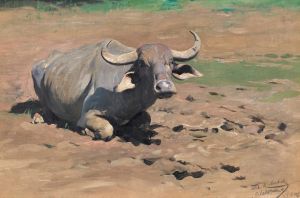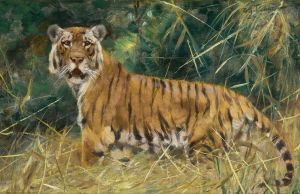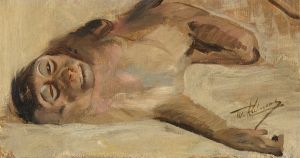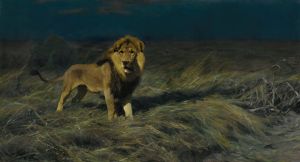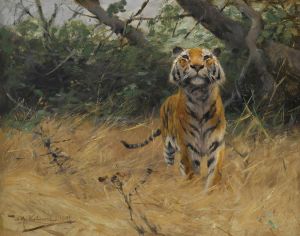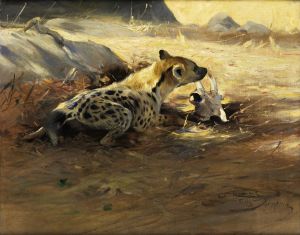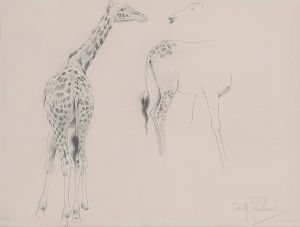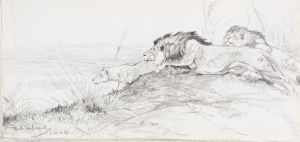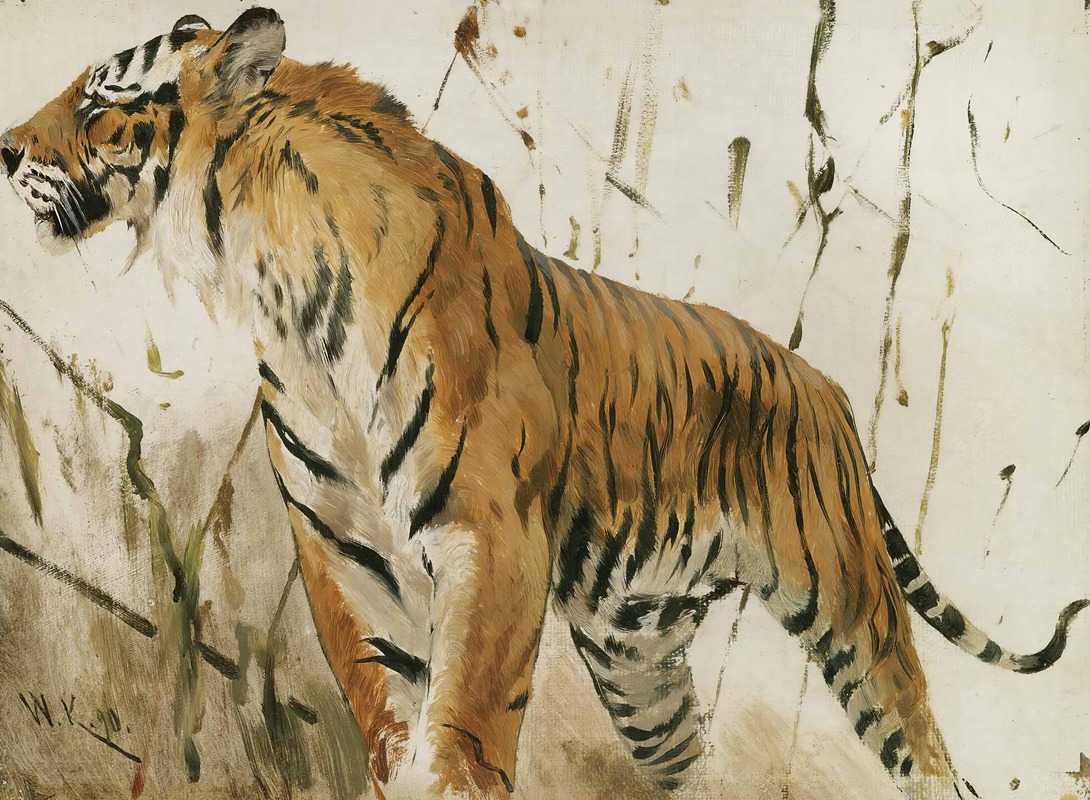
Study Of A Tiger
A hand-painted replica of Wilhelm Kuhnert’s masterpiece Study Of A Tiger, meticulously crafted by professional artists to capture the true essence of the original. Each piece is created with museum-quality canvas and rare mineral pigments, carefully painted by experienced artists with delicate brushstrokes and rich, layered colors to perfectly recreate the texture of the original artwork. Unlike machine-printed reproductions, this hand-painted version brings the painting to life, infused with the artist’s emotions and skill in every stroke. Whether for personal collection or home decoration, it instantly elevates the artistic atmosphere of any space.
Wilhelm Kuhnert (1865–1926) was a renowned German painter and illustrator, particularly celebrated for his detailed and realistic depictions of wildlife. His work is often associated with the genre of animal painting, and he is considered one of the foremost wildlife artists of his time. Kuhnert's paintings are characterized by their meticulous attention to detail and his ability to capture the essence and majesty of the animals he portrayed.
"Study of a Tiger" is one of Kuhnert's notable works, showcasing his exceptional skill in rendering the natural world. While specific details about this particular painting are limited, it is representative of Kuhnert's broader body of work, which frequently focused on the wildlife of Africa and Asia. His fascination with these regions was fueled by his travels, during which he gathered extensive sketches and studies of animals in their natural habitats. These journeys provided him with firsthand observations that informed his studio work back in Germany.
Kuhnert's approach to painting was deeply rooted in realism. He was known for his ability to depict animals with anatomical precision, capturing not only their physical form but also their behavior and environment. This dedication to realism was part of a broader movement in the late 19th and early 20th centuries that sought to document the natural world with scientific accuracy. His paintings often featured animals in dynamic poses, set against lush, detailed backgrounds that reflected their natural surroundings.
In "Study of a Tiger," Kuhnert likely employed his typical technique of using oil paints to achieve rich textures and vibrant colors. Tigers, as subjects, offered Kuhnert the opportunity to explore the interplay of light and shadow on their striped coats, as well as the power and grace inherent in their movements. His ability to convey the majesty of such creatures contributed to his reputation as a master of animal portraiture.
Kuhnert's work was well-received during his lifetime, and he exhibited widely across Europe. His paintings were sought after by collectors and institutions alike, and he contributed illustrations to various publications, further cementing his status as a leading figure in wildlife art. Despite the passage of time, his work continues to be appreciated for its artistic merit and its contribution to the documentation of wildlife during a period of significant change in the natural world.
Today, Wilhelm Kuhnert's paintings, including "Study of a Tiger," are held in various private collections and museums. They serve as a testament to his skill and dedication as an artist, as well as his passion for the natural world. His legacy endures through his detailed and evocative portrayals of animals, which continue to inspire and captivate audiences around the globe.







